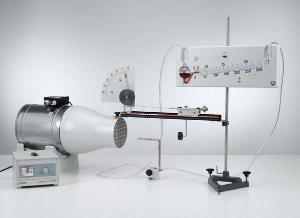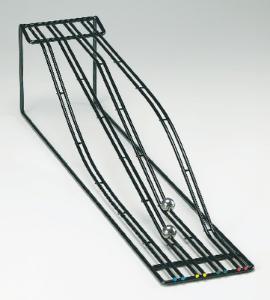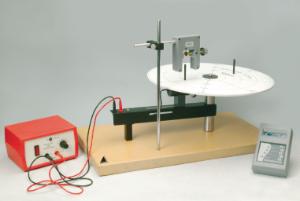Puttin' the Physics of Golf in Your Course!
High School
These facts may inspire students to engage in their science "course" work and want to learn more. In fact, many of your physics lesson plans may already cover concepts directly related to golf.
So, let's stop puttering around and dive right in.
How do golf ball and club technology impact the sport?
There's no doubt that science and math play a significant role in playing golf. In fact, the USGA has an entire Research and Test Center dedicated to investigating the effects of advancing equipment technology on how golf is played. STEM NEWS reports on the USGA Test Center and the scientists and engineers who conduct research there. STEM NEWS explains how students can conduct similar experiments to discover some of the science behind this popular sport.
- A golf ball remains in contact with the club face for about 450 microseconds (0.00045 s), much less than it takes to blink your eye.
- During impact, the clubhead exerts an average force of over 2,000 pounds on the ball, compressing it about one-fourth of its diameter.
In our post, Put Your Spin on Football Science, we discussed how a spiral is the best way for the quarterback to throw a pass. Angular momentum (mass in rotational motion) is the physics concept that helps explain the passing technique. Anything that can rotate, or spin has angular momentum. The best golf shots are hit with backspin, making the golf ball fly like the wings provide lift to an airplane. The backward momentum helps the ball stop after it lands. The brief contact between the club and the ball (see fun fact) produces friction as the opposing force of the club unleashes the ball's spin.
The club face is designed with scores or grooves to keep the grass from interfering with the club and ball interaction. The grooves are designed to help keep water, grass, and debris away from the surface of the club face to maximize friction and ball spin. Challenge your students to consider how having a smooth club head (instead of grooved) would impact friction between the ball and club.
Why do golf balls have dimples?
Golf balls have dimples to reduce aerodynamic drag. When you reduce the drag, the ball can travel farther. In the early days of golf, players used smooth Guttie balls until they realized the old scuffed-up ones went farther. Challenge your students to consider how having a smooth ball surface creates low air pressure resulting in drag.
Including these science facts in your physics lesson plans will surely captivate your class. May the course be with you!
Recommended Products
[StartProductBlock]

Aerodynamics - Air Resistance, Drag Coefficient, and Pressure Curve
Examine the relationship between the air resistance and the flow speed with a circular disk. Measure flow speed with a pressure head sensor and the air resistance with a dynamometer.
[EndProductBlock]
[StartProductBlock]

Potential and Kinetic Energy Tracks
Activity illustrates the relationships of mass, potential energy, and kinetic energy with marble races.
[EndProductBlock]
[StartProductBlock]

FUNdamentals of Physics Rotational Motion
Investigate the relationship between linear and angular velocity.
[EndProductBlock]
